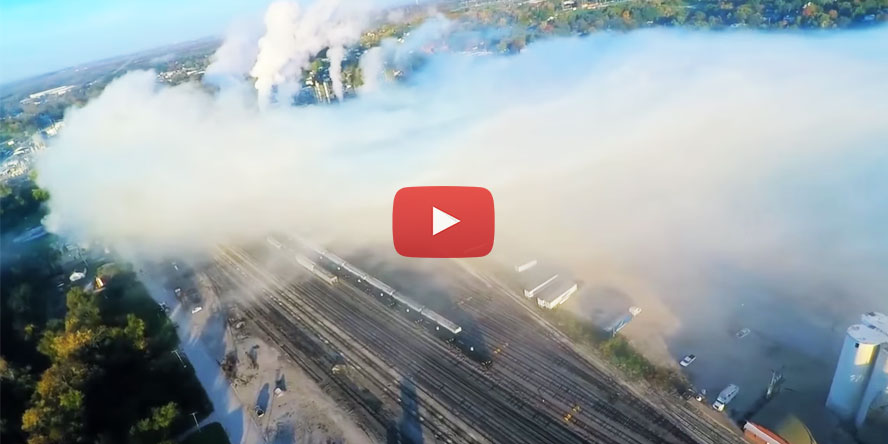On 21st October 2016, as a result of an accidental mixing of reactive liquids, a significant emission of harmful gases took place. The event occurred in a plant producing distilled spirits, as well as wheat starch and proteins. A cloud of harmful gases, which was the result of a chemical reaction, threatened thousands of inhabitants. 140 people, including mainly employees of the company, required medical assistance.
Direct cause of mustard gas emissions
On the unfortunate day, sulfuric acid was mixed with sodium hypochlorite (better known in a less concentrated form as a bleach). The direct cause of the incident was the attachment of a road tanker with sulphuric acid to an inappropriate storage tank, which was located in the open space within the so-called tank farm.
The result was a huge cloud of chlorine gas – a toxic substance that was used by the Germans in 1915 in the battles with the Canadian army at Ypres. This was the first use of chemical weapons during the war (Germany thus broke the 23rd article of the Hague Convention). The same substance was also used in 2016 against the civilian population in Syria.
How chlorine gas was emitted
On 21 October, a road tanker filled with sulphuric acid arrived at the MGPI Processing plant. After the vehicle was parked in the unloading area, the driver started to prepare for unloading. He then went to the control room to sign the documents confirming the delivery. On the return journey, he was accompanied by an operator who, when reaching the unloading area, opened the gate restricting access to the discharge connections, and then took off the protective hood from the sulphuric acid connection.
Moments later, the operator was to inform the driver which nozzle was for the acid and then stepped away. The driver connected the hose connecting the tanker to the pipeline and started the transfer of sulphuric acid. After some time, he noticed a cloud of green-yellow gas. He immediately got off the vehicle to stop further transfer of sulphuric acid, but he was prevented from doing so by the irritating gas.
Causes of chlorinated gas emissions
The investigation showed that the driver connected the tanker to a port intended for sodium hypochlorite. The port was less than half a meter from the actual sulfuric acid port and was not protected against hose connection. The investigation also showed that the markings of the individual ports were illegible or misleading – for example, the sulphuric acid pipeline was marked as hydrochloric acid pipeline. Only one of the five ports was correctly marked.
Interrogations showed discrepancies in the statements of the operator and the driver. The operator testified that he had informed the driver to which port he should connect, and the driver confirmed the location of the correct port. The driver in turn testified that the operator did not indicate the right port.
This does not change the fact that the operator stepped away from the unloading area before connecting the hose to the pipeline, which was a violation of the company’s internal rules in at least at two points:
- the operator must verify that the connection has been made correctly to the appropriate pipeline,
- once everything has been prepared for transfer, it is the operator, not the driver, who is responsible for opening the product transfer valve.
It turned out that some operators did not know the company’s procedures, and the daily practice of unloading road tankers differs from the prescribed.
Only a polypropylene oxide was located in the tank farm area. There were no detection systems for other substances (sodium hypochlorite, sulphuric acid, propylene oxide, sodium hydroxide, acetic anhydride were also stored in the tanks) which could potentially cause a hazard.





